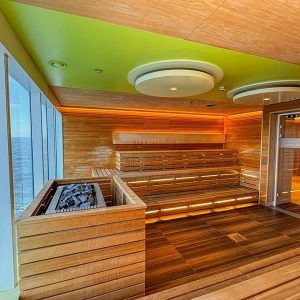The Tram and the Tart
This could also have been subtitled ‘Who was Vasco de Gama?’ but more on that later.
During our time in Lisbon, we kept thinking how much it reminded us of Havana. Havana has its iconic transport in the classic American cars, whilst Lisbon’s darling of the tourists is the vintage Remodelado trams. Whilst the must do journey in Havana is to cruise the Malecon to the sound of a throbbing V8 engine and waves crashing into the sea wall, 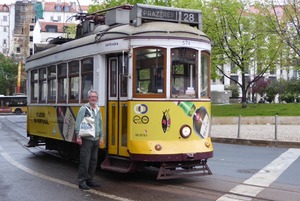 Tram 28 provides the equivalent but to the sound of clanking, groaning and tring, tring, as it navigates the amazingly steep hills and outrageously sharp turns through the Alfalma district. Both forms of transport have been kept going well past their expected expiry date, with them both owing their longevity to the ingenuity of their hosts. The modern trams that ply other routes in the city cannot cope with the inclines and twists of route 28. The comparison could also be made on the buildings in the city. There are so many amazing buildings where the architecture or intricate tile work and mosaics are worthy of standing and admiring (the same can be said of the pavement mosaics as well) but so much is in real need of some TLC, although fortunately there aren’t any ‘just about standing’ examples as there are in Havana.
Tram 28 provides the equivalent but to the sound of clanking, groaning and tring, tring, as it navigates the amazingly steep hills and outrageously sharp turns through the Alfalma district. Both forms of transport have been kept going well past their expected expiry date, with them both owing their longevity to the ingenuity of their hosts. The modern trams that ply other routes in the city cannot cope with the inclines and twists of route 28. The comparison could also be made on the buildings in the city. There are so many amazing buildings where the architecture or intricate tile work and mosaics are worthy of standing and admiring (the same can be said of the pavement mosaics as well) but so much is in real need of some TLC, although fortunately there aren’t any ‘just about standing’ examples as there are in Havana.
Lisbon is the city of seven hills. Having mentioned the mosaics and hills already, combine that with cobblestone streets and a comfortable pair of walking shoes with good grip is a must to navigate Lisbon’s delights safely. The mosaics can be treacherously slippery underfoot, in places, when wet. Also utilise the excellent public transport system, a bus or tram will often deliver you close to the front door of your favourite attraction and save your legs.
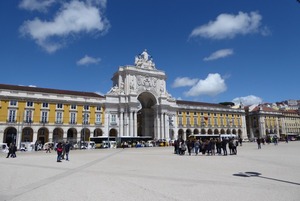 We got the low down of Lisbon’s history the easy way by visiting the Lisbon Story, located at Praca do Comercio. The English language commentary is given by personal headset, that automatically plays the relevant soundtrack as you walk around the displays (no fiddly numbers and buttons to worry about). Outside we admired the 18th Ventura arcades, the statue of Dom Jose I and the regal Arco da Victoria. The square was the gateway for all trade during its prosperous times, with one side adjacent to the river, now it bustles with tourists, trams, tuk-tuks and buses.
We got the low down of Lisbon’s history the easy way by visiting the Lisbon Story, located at Praca do Comercio. The English language commentary is given by personal headset, that automatically plays the relevant soundtrack as you walk around the displays (no fiddly numbers and buttons to worry about). Outside we admired the 18th Ventura arcades, the statue of Dom Jose I and the regal Arco da Victoria. The square was the gateway for all trade during its prosperous times, with one side adjacent to the river, now it bustles with tourists, trams, tuk-tuks and buses.
We’d handily based ourselves at the Hotel Mundial in Praca Martim Moniz, which is the start point for the vintage Tram 28. We started out at 8:15am (with a very excited Silver Travel bag – see picture) as later in the day the queues get very long and the trams very crowded (perfect conditions for pickpockets). A full circuit gave us the lie of the land and on the return journey we jumped off at Graca where we walked up past the barracks and enjoyed great views from one of the highest viewpoints in Lisbon. From here we navigated the narrow, winding, quaint and cobbled streets of Alfalma the former Moorish area, taking in the flea (thieves) market and Panteao Nacional. 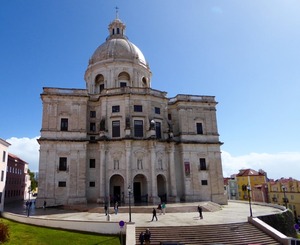 The Panteao Nacional’s position meant that my climb to the 4th floor not only gave me a close up of its huge dome, but impressive views over Alfalma down to the Rio Tejo. Inside the balcony at this level gives you dizzy views of the internal space that plays homage to Portugal’s heroes. Our biggest blunder was to then try and pick our way to the castle, where many hilly streets and tired legs later, we realised we should have got back onto the tram and taken it down to the cathedral (drops you outside) and used the 737 bus from the city to drop us close to the castle entrance.
The Panteao Nacional’s position meant that my climb to the 4th floor not only gave me a close up of its huge dome, but impressive views over Alfalma down to the Rio Tejo. Inside the balcony at this level gives you dizzy views of the internal space that plays homage to Portugal’s heroes. Our biggest blunder was to then try and pick our way to the castle, where many hilly streets and tired legs later, we realised we should have got back onto the tram and taken it down to the cathedral (drops you outside) and used the 737 bus from the city to drop us close to the castle entrance.
The Castelo de Sao Jorge can trace its history back to 5th century and if the impressive views weren’t enough, we were also treated to a show by the resident peacocks, displaying for the ‘hand of their maiden’. The Se Cathedral was built in 1150 over the ruins of a mosque, after the area was taken from the moors.
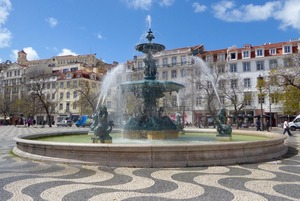 Working our way down from Rossio station with its ornate and intricate arched windowed facade, we enjoyed Praca Dom Pedro IV. It has a columned theatre at the top, a couple of great fountains, plus a monument to Brazil’s first emperor Dom Pedro at its centre. It always seems to be bustling and busy and one of the Ask Me Lisboa booths is also here, part of the great Visitor Information service for Lisbon. The thing that really catches your eye here though (and a times plays tricks with your eyes) is the wavy mosaic on the floor of the entire place. I swear it moves! Close by we rode on the Elevador de Santa Justa, one of the most photographed places in Lisbon. The ironwork structure is Lisbon’s only vertical street lift and its wood panelled interior elevates you to a level where a spiral staircase leads you up to a viewing platform. This provided fine views over the city, including Dom Pedro IV square and the arched ruins of Canvento do Carmo.
Working our way down from Rossio station with its ornate and intricate arched windowed facade, we enjoyed Praca Dom Pedro IV. It has a columned theatre at the top, a couple of great fountains, plus a monument to Brazil’s first emperor Dom Pedro at its centre. It always seems to be bustling and busy and one of the Ask Me Lisboa booths is also here, part of the great Visitor Information service for Lisbon. The thing that really catches your eye here though (and a times plays tricks with your eyes) is the wavy mosaic on the floor of the entire place. I swear it moves! Close by we rode on the Elevador de Santa Justa, one of the most photographed places in Lisbon. The ironwork structure is Lisbon’s only vertical street lift and its wood panelled interior elevates you to a level where a spiral staircase leads you up to a viewing platform. This provided fine views over the city, including Dom Pedro IV square and the arched ruins of Canvento do Carmo.
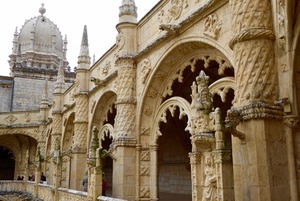 Belem (tram 15 takes you there) is the home of UNESCO listed Mosteiro dos Jeronimos, where the amazing intricacy of the outside was trumped by the quite wondrous cloisters on the inside. Fans of cloisters who have delighted at those available in Oxford or Canterbury, should be prepared to say wow again (even if it’s just inside your head). The twisted, leafed patterned columns, decorative arches, blah blah blah, it’s brilliant. On the second floor we got spectacular views of the church, which we visited later. It is one of the two places (alongside Panteao Nacional that claims to have the tomb of Vasco de Gama! There are plenty of museums to visit out at Belem and we chose to take in the Torre de Belem and the Coach Museum. Neither are able to follow the wow of the monastery but worth a visit particularly as they are free if, like us, you’d decided to invest in the excellent value Lisboa Pass.
Belem (tram 15 takes you there) is the home of UNESCO listed Mosteiro dos Jeronimos, where the amazing intricacy of the outside was trumped by the quite wondrous cloisters on the inside. Fans of cloisters who have delighted at those available in Oxford or Canterbury, should be prepared to say wow again (even if it’s just inside your head). The twisted, leafed patterned columns, decorative arches, blah blah blah, it’s brilliant. On the second floor we got spectacular views of the church, which we visited later. It is one of the two places (alongside Panteao Nacional that claims to have the tomb of Vasco de Gama! There are plenty of museums to visit out at Belem and we chose to take in the Torre de Belem and the Coach Museum. Neither are able to follow the wow of the monastery but worth a visit particularly as they are free if, like us, you’d decided to invest in the excellent value Lisboa Pass.
We also enjoyed a day trip to Simtra, but that’s another story.
There was a wealth of richly rewarding things to uncover in Lisbon. Make good use of the resources provided by ‘ask me’ both before you go and whilst you’re here. Planning your trip well could save you from aching legs and there’s plenty of enjoyment to be had constructing your route for the day whilst munching on a pasteis de nata (custard tart in flaky pastry).

